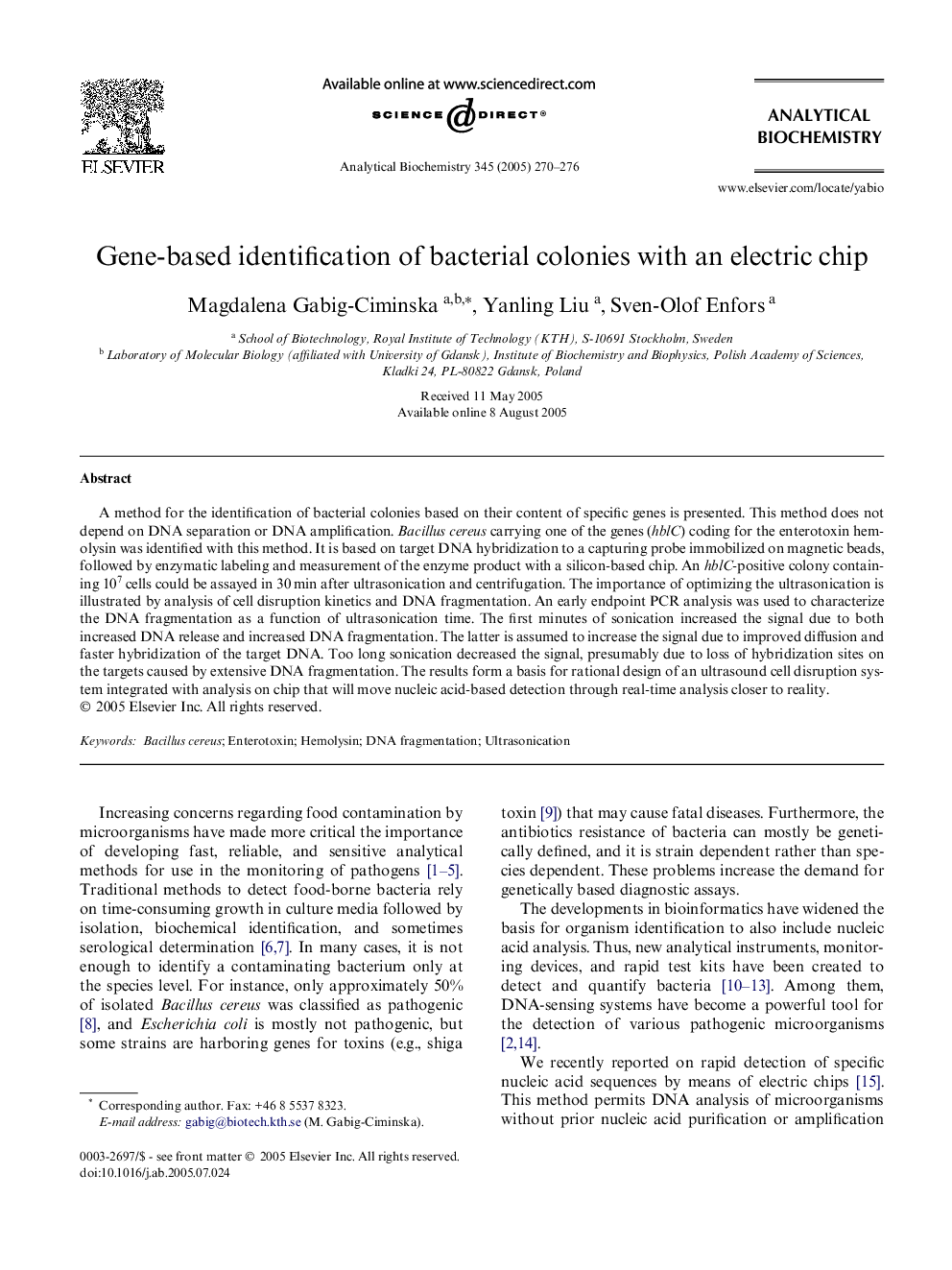| Article ID | Journal | Published Year | Pages | File Type |
|---|---|---|---|---|
| 10533049 | Analytical Biochemistry | 2005 | 7 Pages |
Abstract
A method for the identification of bacterial colonies based on their content of specific genes is presented. This method does not depend on DNA separation or DNA amplification. Bacillus cereus carrying one of the genes (hblC) coding for the enterotoxin hemolysin was identified with this method. It is based on target DNA hybridization to a capturing probe immobilized on magnetic beads, followed by enzymatic labeling and measurement of the enzyme product with a silicon-based chip. An hblC-positive colony containing 107 cells could be assayed in 30Â min after ultrasonication and centrifugation. The importance of optimizing the ultrasonication is illustrated by analysis of cell disruption kinetics and DNA fragmentation. An early endpoint PCR analysis was used to characterize the DNA fragmentation as a function of ultrasonication time. The first minutes of sonication increased the signal due to both increased DNA release and increased DNA fragmentation. The latter is assumed to increase the signal due to improved diffusion and faster hybridization of the target DNA. Too long sonication decreased the signal, presumably due to loss of hybridization sites on the targets caused by extensive DNA fragmentation. The results form a basis for rational design of an ultrasound cell disruption system integrated with analysis on chip that will move nucleic acid-based detection through real-time analysis closer to reality.
Related Topics
Physical Sciences and Engineering
Chemistry
Analytical Chemistry
Authors
Magdalena Gabig-Ciminska, Yanling Liu, Sven-Olof Enfors,
